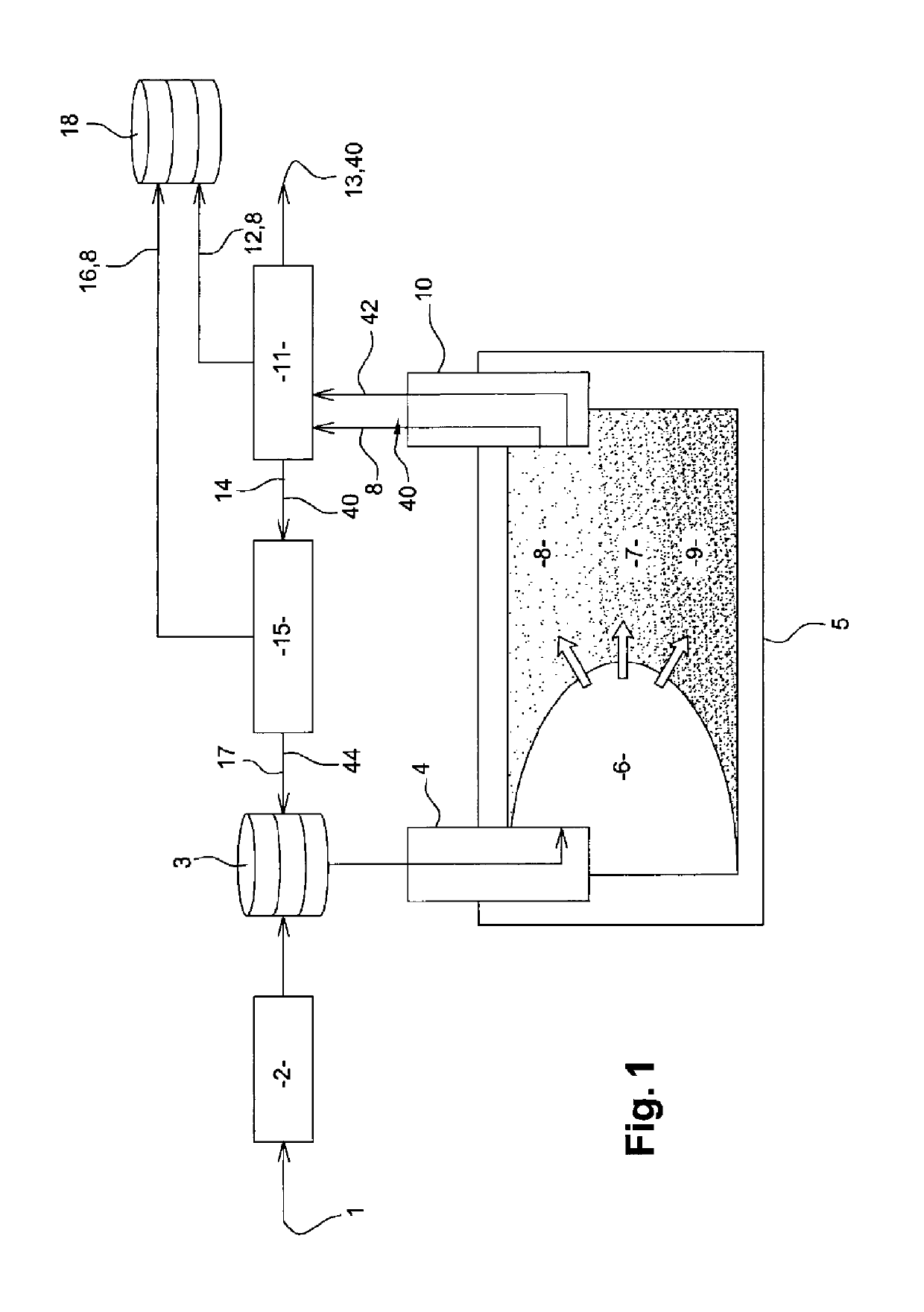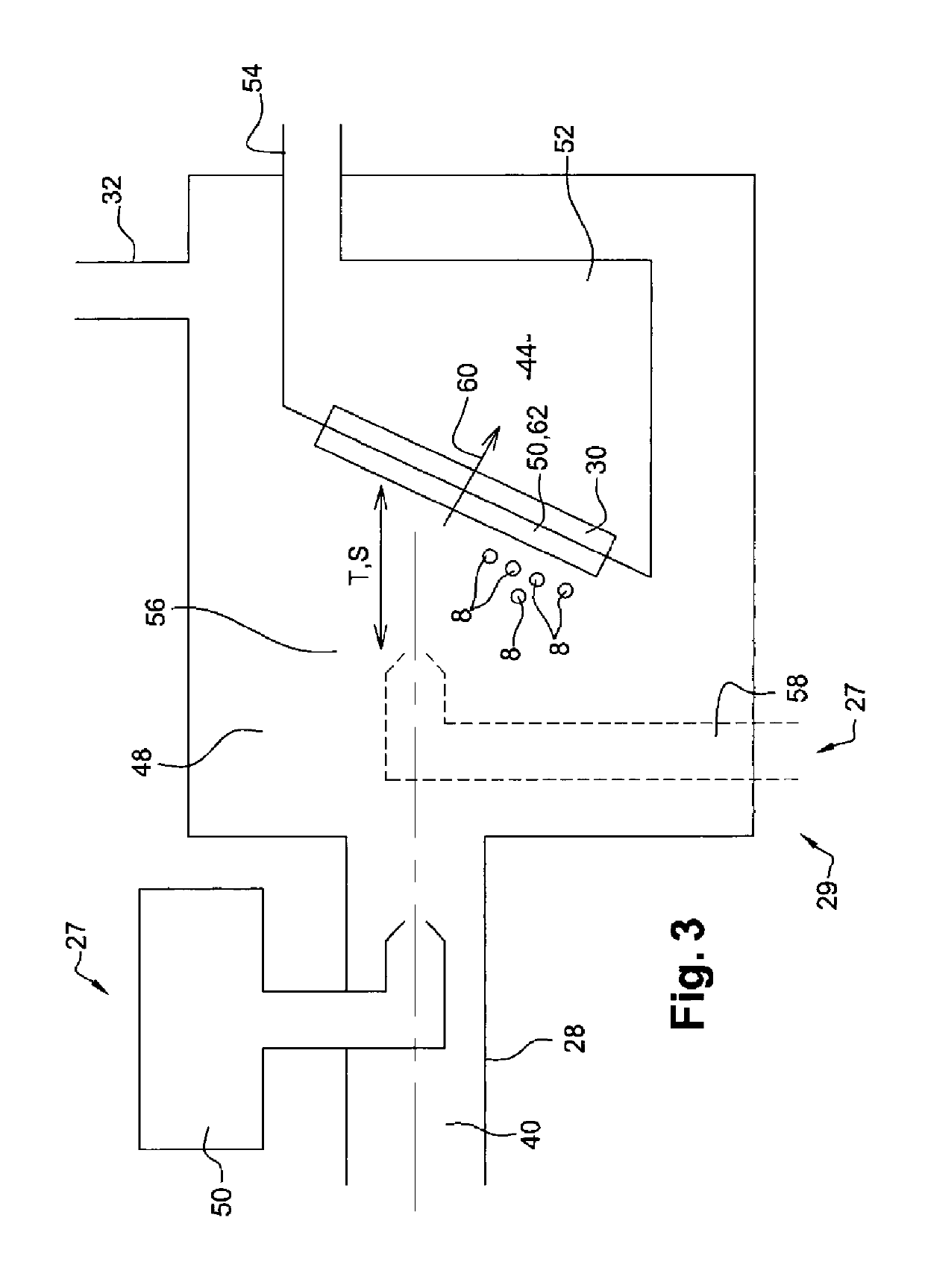Purification of oil-polluted water and device suitable therefor
a technology of oil-polluted water and purification device, which is applied in the direction of quarries, waste water treatment, and treatment water from quaries, etc., can solve the problems of not being able to discharge untreated into the environment, affecting the quality of oil, and wasting precious oil, etc., to achieve the effect of reducing the residual oil content of water, allowing long run times, and reducing the risk of contamination
- Summary
- Abstract
- Description
- Claims
- Application Information
AI Technical Summary
Benefits of technology
Problems solved by technology
Method used
Image
Examples
Embodiment Construction
[0045]FIG. 1 shows an external water source 1 (for example either an underground aquifer or seawater) from which water may be taken as injection water and, after treatment in a treatment plant 2 (for example seawater desalination), pumped via an injection well 4 into an oil field 5. In order to compensate fluctuations, the injection water may previously be held in intermediate storage in a tank 3. The introduced injection water results in the formation in the oil field 5 of a water bank 6 which presses an oil bank 7 towards an extraction well 10. The oil bank 7 is here composed of a proportion of oil 8, in this case petroleum, and a proportion of formation water 9. Due to its density, the oil 8 is located more in the higher part of the oil bank 7, while the formation water 9 is mainly stored in the lower zones thereof.
[0046]A mixture 40 of oil 8 and water 42 (process water, in this case formation water 9 and / or injection water) now emerges from the extraction well 10. Said mixture i...
PUM
| Property | Measurement | Unit |
|---|---|---|
| concentration | aaaaa | aaaaa |
| concentration | aaaaa | aaaaa |
| size | aaaaa | aaaaa |
Abstract
Description
Claims
Application Information
 Login to View More
Login to View More - R&D
- Intellectual Property
- Life Sciences
- Materials
- Tech Scout
- Unparalleled Data Quality
- Higher Quality Content
- 60% Fewer Hallucinations
Browse by: Latest US Patents, China's latest patents, Technical Efficacy Thesaurus, Application Domain, Technology Topic, Popular Technical Reports.
© 2025 PatSnap. All rights reserved.Legal|Privacy policy|Modern Slavery Act Transparency Statement|Sitemap|About US| Contact US: help@patsnap.com



